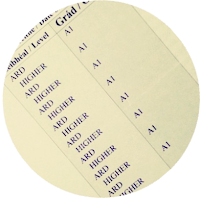“Yeats can certainly be called a great Irish poet”.
Discuss this statement, supporting your answer with reference to both the themes and language found in the poetry of W. B. Yeats on your course.
Introduction
I certainly agree with this statement. (Tip: state broadly your attitude to the subject of the question). The work of W.B. Yeats is saturated with evocative, descriptive imagery, deeply explored personal feelings, universal, but profound subject matter and strong political opinions. He isn’t just a great figure in world literature, but he is a very patriotic poet who truly loved Ireland. I would like to further explore this statement by referring to the following poems: Lake Isle of Innisfree, The Wild Swans at Coole, Easter 1916, September 1913, An Irish Airman Foresees His Death and Stares Nest by My Window. (Tip: list of the poems you wish to address in the introduction. It shows the examiner that you are going to really explore the question and provide evidence. Aim to explore 3 or 4 poems in depth and at least mention another two).
Main Text
There are a lot of natural images and references to nature in Yeats’s poetry. These appear in poems that may be seen as nature poems at first. On closer examination it is evident that such references are just a beautiful poetic way of exploring deeper complex subject matter. Lake Isle of Innisfree is full of such images:
Nine bean rows will I have there
And live alone in the bee loud glade
(Tip: punctuation – commas, full stops- nearly always stay within the quotation marks in case you are wondering. Double quotation marks are more widely accepted. I use italics instead of quotation marks because it is easier to read. Quotation marks have to be used in handwritten answers).
This is used to contrast the harmony of nature to his own feelings. Obviously the poet wants to escape the pavement gray of London. The major theme raised in this poem is escapism, rather than just the love of nature. To further emphasise this harmony Yeats uses assonance and alliteration:
Lake water lapping with low sounds by the shore
The unusual latinate sentence structure also reminds the reader of the way in which the Bible is written. This contributes to the atmosphere of peace as well as touching the hearts of contemporary Irish readers. (Tip: throw in a reference to the question to maintain your angle, as opposed to a straight “all-I-know-about-this-poem” style of writing).
A similar way of writing is used in The Wild Swans at Coole. (Tip: as you move from one paragraph to another try to connect them to give the essay more continuity and integrity). The poet uses striking vivid imagery of the clamorous wings of the swans. The bell-beat of their wings creates an atmosphere of love and togetherness among the swans:
Unwearied still, lover by lover…
Their hearts have not grown old
(Tip: try to give some evidence, quotations in this case, for each point you make).
However, the poet himself laments his unrequited life-long love for Maud Gonne and the fact that he is ageing. Obviously, deep personal feelings are explored here through the use of nature-inspired imagery, a fascinating way to express oneself. It could also be a reference to the general atmosphere that dominated Ireland in those years: togetherness and love moved down on the priorities list in the Civil War years. (Tip: this last point sounds like it is a historical reference. Is it really? No, it is opinion. But it addresses the question and is backed by a quotation, so it will fly. It shows the examiner that you are thinking about the poem from many different viewpoints. Once again, it is a reference to the angle of the question. Everyone will write about the big well-known facts and obvious points regarding a given poet, but poetry also has a beautiful openness for interpretation. Use it to get some marks!)
The poems Stare’s Nest by My Window and Easter 1916 also contain extended metaphors describing the natural world. However, the subject matter shifts from deeply personal to political and patriotic. In Easter 1916 the poet expresses complex feelings towards the heroes of the Rising. He admires them for their braveness. At the same time, he admits that the Rising was a horrible event for many – a terrible beauty is born. To illustrate this he says that the rebels’ hearts seem to have been enchanted to a stone to trouble the living stream. (Tip: quotations look good both as stand alone lines or incorporated into a sentence. Be careful to not have to alter the exact line as that limits your right to put quotation marks around it. A paraphrased allusion is legitimate in an essay. Be sure to leave out the quotation marks, otherwise you will be penalised for misquoting the poem).
The peace and harmony of nature sharply contrast with the desperate heroism of Countess Markievicz, Thomas McDonagh and Yeats’s other heroes. It emphasises their contribution to the history of this country.
The poet found that the act of the bees building in the crevices of loosening masonry is similar to his idea of what the Irish people should be aspiring to do in Stare’s Nest by My Window. This is a fascinatingly precise image. The bees symbolise the Irish people who should commit themselves to the hard work of helping to restore the country; the loosening masonry is the fading away British presence. (Other interpretations of loosening masonry are an unstable society. Write about it in a way that resonates with you.)
Apart from natural imagery, there are also other types of images in this poem that are very impersonal. A house is burnt… a man is killed; an image of a soldier in his blood and a barricade. The use of the indefinite article attributes to the sheer horror of the Civil War. It shows that people are doing something terrible to one another.
Yeats’s passion for the fate of the country is also very obvious in September 1913. He sees the Catholic middle class as a miserly greedy ignorant crowd indifferent to Ireland, but only adding the halfpence to the pence and prayer to shivering prayer. (Tip: adjectives are a marker of your eloquence; feel free to use them! However, avoid using synonyms. For example, don’t say miserly greedy crowd.) Yeats uses a lot of rhetorical questions, e.g.
Was it for this that the Wild Geese
Spread their grey wings upon every tide,
For this that all the blood was shed,
For this Edward Fitzgerald died
This is very accusative and unequivocally directed at those who fumble in a greasy till. Yeats contrasts the people of the past and those who now live in this country. He concludes that all the heroism, the delirium of the brave might have been in vain. The people of the present do not appreciate their country at all:
Romantic Ireland’s dead and gone
It’s with O’Leary in the grave
There is, of course, a marked change in Yeats’s attitude three years later. The opening tone of Easter 1916 is humble. This further emphasises how Yeats truly and unconditionally loved Ireland.
Conclusion
Yeats’s subject matter is universal: country, love, nature, ageing, war. He explores death and the meaning of life in An Irish Airman Foresees His Death. He writes about the themes usually raised by poets. His ability to find amazing analogies between our lives and nature, his strength of conviction, his talent to write in perfect rhyme with a memorable rhythm makes him a magnificent Irish poet.



Hey I was wondering if you have a essay on Gerard manly Hopkins
Hi,
Thanks for the question.
I'm afraid Hopkins wasn't on the curriculum in my day so I can't help you with it.
Good luck and I hope these essays are helpful to you
the sample answers are very helpful
Thanks so much for posting these – very clear and to the point, no wonder you got all those A1s! Very generous of you to share, making 6th year a little less daunting xo
Thank you so much for this! ^-^